We worked with a leading global enterprise to support their strategic move to to cloud initiative.
The customer’s primary objective was to move to a a single public cloud in the first phase of their transformation.
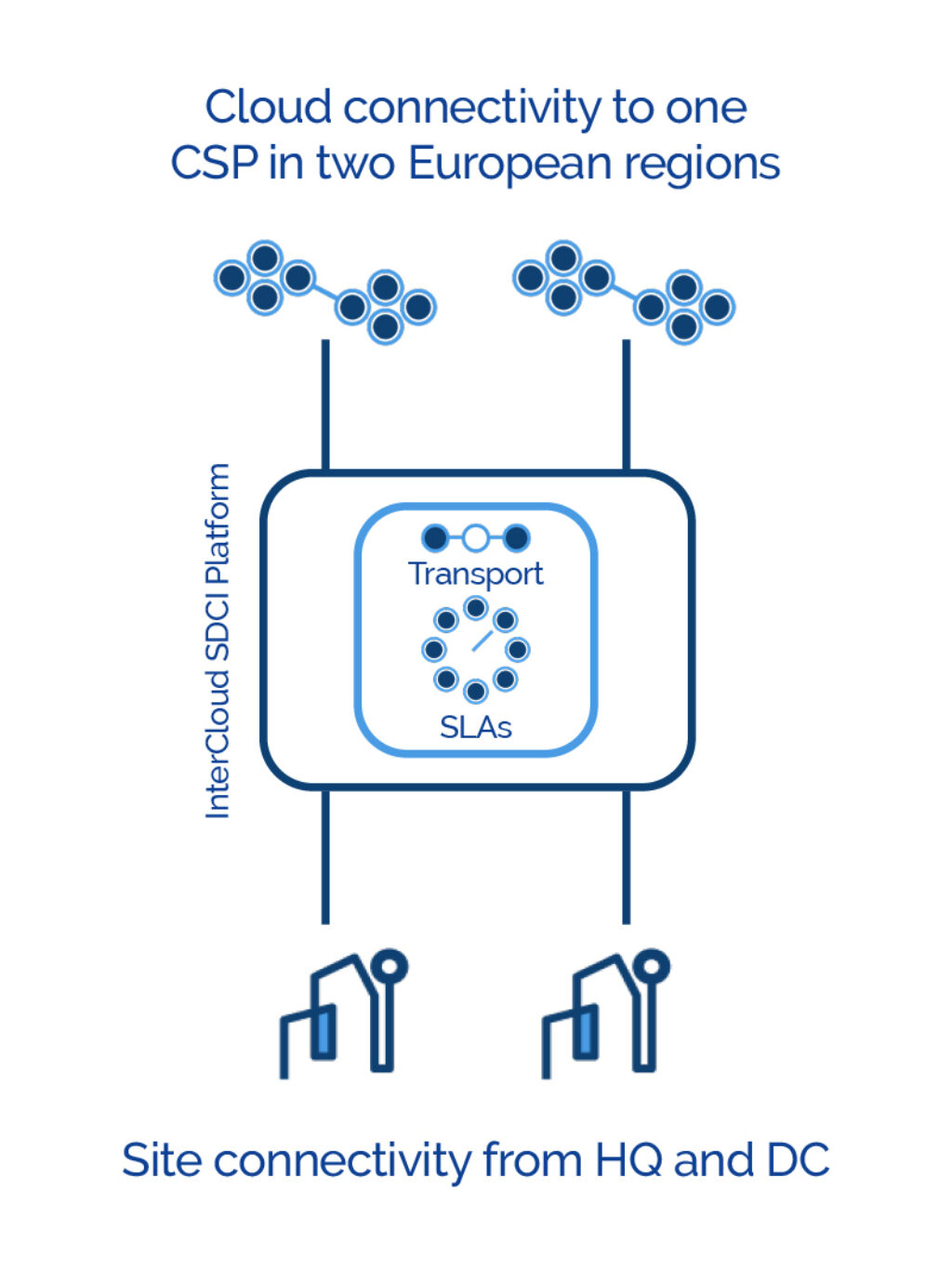
We worked with a leading global enterprise to support their strategic move to to cloud initiative.
The customer’s primary objective was to move to a a single public cloud in the first phase of their transformation.

The customer was concerned about the potential high costs and lack of security associated with connecting to the cloud via the public internet.
The customer faced limitations relating to the availability of internal teams in order to tackle such a project and recognized the need to work with a private cloud connectivity specialist to step-in and accelerate the secure deployment.
The risks associated with business continuity was a primary concern for the customer, with many business-critical processes relying on robust cloud connectivity.
In order to deliver against their objectives, the customer needed to be sure that it could maintain sensitive data in a controlled on-premises environment with secure cloud connectivity.

Our solution enabled connections to the CSP of choice in their region of choice, in multiple locations, to ensure resiliency.
We delivered a seamless solution to interconnect the customer’s private infrastructure to the cloud and deliver full redundancy, reliability, visibility and enhanced security.
With several sites and hybrid cloud data centers interconnected the customer is able to support their migration objectives and ensure stability of everyday traffic.
The solution delivers complete scalability to support their future initiatives and migration projects, and enables them to easily support new cloud service provider connections.
The solution is fully managed by our team of experts, delivering market-leading KPIs.

With our solutions the customer was able to pick up the pace of its strategic projects, relying on our services for fast deployment, certainty and assurance.
By engaging with us, the customer was able to free internal resource and enable them to focus on other core business initiatives – saving cost and improving performance.
The solution delivers a network infrastructure that is fit for purpose and ready to support the customer in delivering increased value from the cloud.
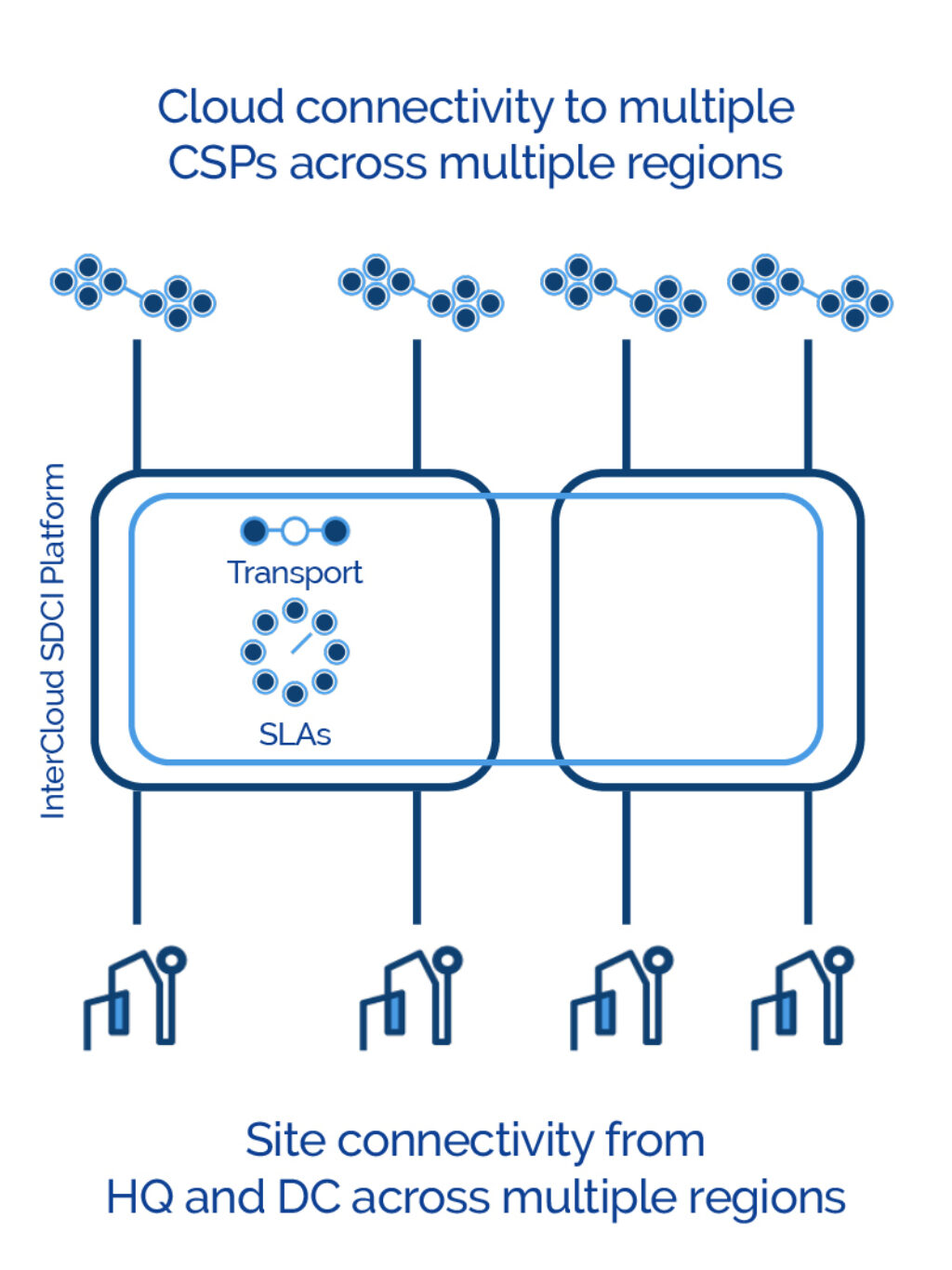
After undertaking a migration to a single cloud in Europe a customer approached us while considering refactoring across multicloud.
The customer was seeking to deliver improved agility and performance across their infrastructure and extend its cloud connectivity model to south-east Asia.

The customer recognized that the burden of overcoming complexity in connecting new clouds, alongside data migration and creating new interfaces required expert outside support and guidance.
Microservices based, distributed architectures for applications require low latency and stable performance, something that the customer needed complete assurance on.
With multiple providers and multiple regions, not getting the next steps correct would result in higher costs and even greater complexity for them to manage.

Transport provided via InterCloud’s SDCI platform and our Cloud Connect services enabled the customer to easily connect cloud service providers
The solution delivered cloud to cloud transport between different CSPs and ensured low latency and secure communication.
With an inter-region transport service between Europe and South-East Asia, configured through the SDCI platform, the customer was able to control and monitor bandwidth and adjust as needed.

The customer was able to deliver compliance and transmit sensitive data across the globe, securely.
Interactive applications performed noticeably smother and high-volume applications benefited delivered financials gains due to reduced cloud egress costs.
The solution enabled the customer to optimize and rationalize applications from anywhere and run them anywhere.
Through the right-sizing of inter-region capacity the customer was able to pay for what was needed and scale bandwidth up and down as required.
With this new model in place, the customer can rely on one single point of accountability at InterCloud across this common operating model.
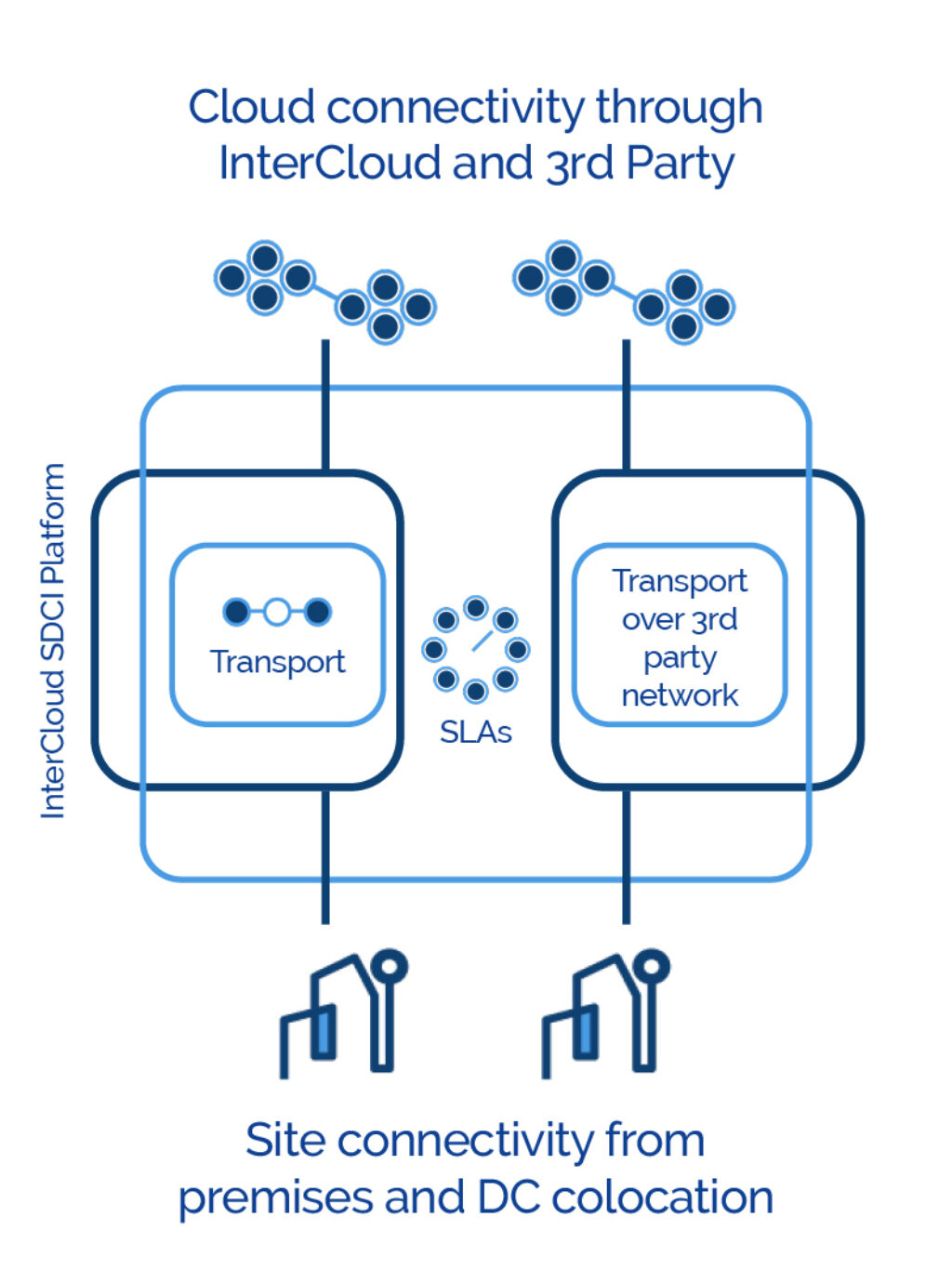
A customer approached us following a network outage that significantly impacted business operations.
The organization was seeking to protect its business critical network and enable quick restoration of network connectivity if future disruption occurred.

Data backups and recovery require more robust networks, combining private connectivity and diversity from the existing one.
The challenge of supporting multiple locations is complex and required consideration for multiple locations, single or multi-cloud based, on-premises and co-location in data centers.
Significant time, effort and resources would be required to deliver and manage a fully divers network, something that would be beyond this customer’s core skills.
With internal teams maximized on other strategic initiatives, the company recognized that they lacked the expertise to take on the development and on-going management of a high availability solution.

InterCloud provided an integrated, fully managed service with no single point of failure that leveraged two carriers for private cloud connectivity, delivering ultimate resilience.
The solution delivered private, robust, high-speed connectivity for fast paced recovery when needed.
This disaster recovery solution connected all locations of interest with diversity to ensure the recovery of operations for all users and applications
Regular testing of the DR network gives the customer complete certainty that they are always ready to respond to disruption should it occur.
With a 99,99% availability SLA and the support of our service management team the customer took peace of mind from the new network approach.

With the network optimized to respond to disruption, the customer was able to take peace of mind from the solution in place and focus on other initiatives.
With InterCloud’s continuous network monitoring the customer was able to have complete visibility of network performance in real time.
As a managed service, the customer simplified its business continuity processes and was able to call on one single service provider to manage the security, performance and governance of network operations.
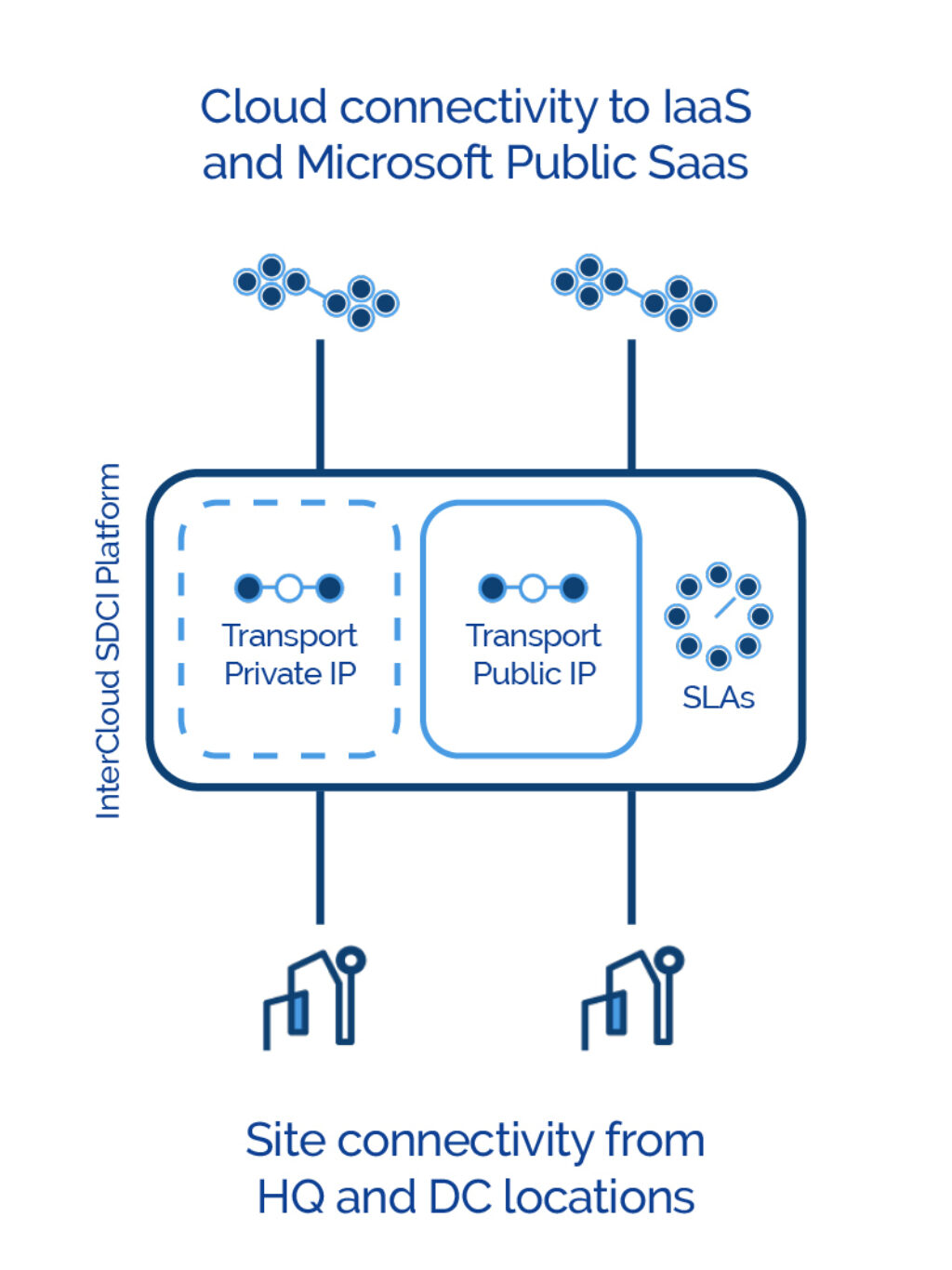
An enterprise approached us regarding a suitable option for ensuring a stable Office 365 experience across their business.
Deliver an enhanced user-experience for utilizing Office 365 applications across their business, while ensuring increased reliability, performance and security.

The company was feeling limited by being unable to gain any performance guarantees and was concerned of security attacks when using the internet to connect
Being unable to gain redundancy and/or SLA commitments when using IX peering left the company concerned over additional risks to business continuity.
As a result of using multiple ISPs across their business to deliver connectivity to O365, they were unable to troubleshoot connectivity challenges.

InterCloud was able to connect he main locations with a single hop through the intercloud backbone to the Microsoft public network.
The solution delivered high speed and high availability thanks to local and geographical redundant connections to Microsoft over dedicated on-ramps.
Easily adaptable and scalable model to support future growth of the customer’s cloud connectivity requirements.

Optimized connectivity to Office 365 and Teams at the closest peering to customer sites.
Delivered greater control for monitoring and troubleshooting.
Benefit of SLA commitments on both InterCloud and Microsoft.
Able to support the CISO requirements for the use of public SaaS.
Site connections to the InterCloud platform are multiservice ready and can be leveraged to connect privately to other clouds for IaaS.
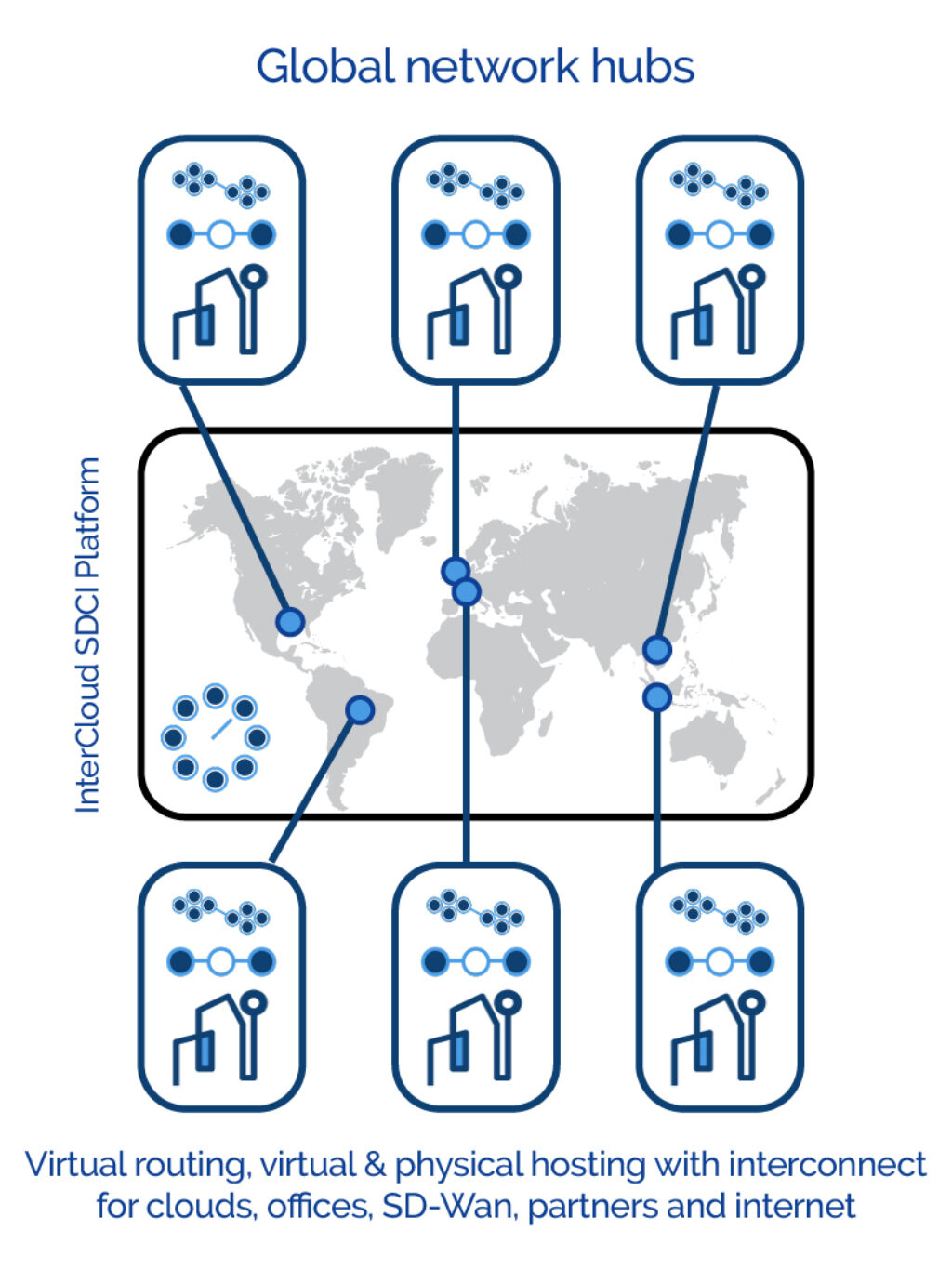
A large organization engaged with InterCloud as it recognized it was limited with the volume of workloads running in the public cloud.
They needed to develop a new way of powering global connectivity across their business that reduced egress fees and optimized routing of traffic across the business.

Running multiple clouds was leading to poor optimization of internal resources and a lack of harmony for security and data exchange between regions, business units, users, data and applications.
With such complexity, the enforcing of security rules and other peripheral functions was holding the company back from a common governance approach.
With a growing reliance on the cloud, the company could not risk increasing latency due to public cloud computing.
High volumes of data exchange across the clouds was resulting in unacceptable and unsustainable levels of data egress fees.

Network Hubs, placed in selected InterCloud Edges and at colocation hubs of the customer’s choice, provide lower latency points to interconnect with the required locations.
InterCloud’s SDCI Platform, interconnects privately with the main offices, and with the SD-WAN forming a cloud centric private transit hub network
This solution provides virtual routing at each of the Hubs, This customer also opted for InterCloud virtual hosting at the Hubs, to deploy and interconnect SDWAN gateways.
InterCloud operates global routing and traffic engineering for the transit and each interconnect with the clouds, offices, SDWAN, partners, and Internet.
The enterprise also uses the hubs to run edge functions such as firewalling, remote access and more.

Reduced need to rely on Internet thanks to cheaper private connectivity and proximity with many service providers from the hubs perimeter functions such as as firewalling don’t need to be replicated in each public cloud.
The organization can run the same security technology everywhere and use a unique operating model worldwide
Network hubs leveraging virtual functions remove hardware adherence and can easier be replicated, scaled, or moved.
Workloads, data, and interfaces placement is now agile and can be optimized based on latency, costs, and regulation.